The Chesapeake Bay’s Magical Eastern Shore: A Road Trip
It's different things to different people, this Mid-Atlantic coastal Brigadoon. To the watermen whose ancestors began their begetting here in the early 1600s, the Eastern Shore of Chesapeake Bay is a testament to pride and pluck—to the essential and enduring craft of harvesting the crabs and oysters that have filled markets and tavern tables since Colonial times.
To the generations of farmers, it's a verdant plot where the effort to find ways of staying commercially viable has transformed cattle fields into vineyards.
To weary urbanites hoping to get as far from the madding crowd as possible, it's a time-warped place enveloped in an aura of authenticity and a strong, inalienable sense of self.
To lovers of history, it's a trove of sites waiting to be discovered, from the river port towns to the coastal villages where packet boats plied the bay during the Revolutionary War.

And finally, to anyone who savors the taste of fresh food from the sea, the Eastern Shore is nothing less than a mecca. Around every corner, down every back road flanked by corridors of sky-high corn, there is bounty, from four-star preparations and deep-fried delights to crabs steamed in a shack by the highway. Here is where you can peel oysters off a rock at low tide, pry them open, and pop them in your mouth.
It's this layered, near-mythic region that holds, we speculate, the keys to the soul of the Chesapeake. Which is what sends my wife, Melissa, and me on a road trip south from our New York home to the Delmarva Peninsula, journeying along the shorelines of Maryland and Virginia that hug the Chesapeake at its narrowing zenith.
The natural spot for us to enter our Brigadoon is one of the Colonial jewels of Maryland's rural Kent County: Chestertown. Roughly a two-hour drive from Baltimore, Philadelphia, and Washington, D.C.—but worlds removed in style of life—the town's brick mansions reflect its prominence as a bastion of the 19th-century merchant class. The surrounding land includes many farms that have been in operation for more than a century. It's also where, we hear, Steve Quigg makes a damn good cocktail.
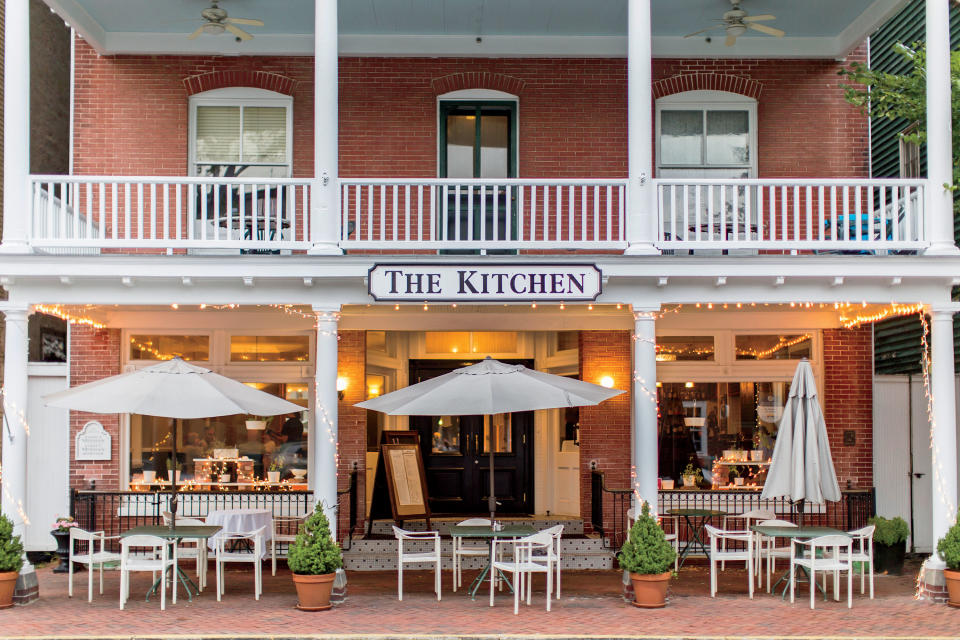
And there he sits, zesting a bucket of lemons at a sidewalk table in front of The Kitchen at The Imperial, a century-old boardinghouse-become-boutique-hotel devoid of pretension and overflowing with charm. Savoring the sleepy-sweet summer river air, the former IT consultant is wearing the lazy smile that Buddha probably wore sitting under that tree for those legendary 49 days.
"The zest will go into our homemade limoncello," he explains, "and I'll probably grill the lemon halves for an oyster dish."
Quigg's farm-to-plate philosophy is as literal as it gets. The peaches and tomatoes that arrived in the bed of a weathered pickup from a farm a mile out of town will find their way into tarts, sauces, and whatever else strikes his fancy. The local cucumbers that have been marinating in a gallon jug of vodka for the past week will service a killer martini.
But for Quigg, the rewards of reinventing himself on the Eastern Shore aren't measured just by the freshness of his ingredients. He's found something else on the calmer side of the Chesapeake Bay: a downshift toward a simpler way of doing things.
He's not alone. Around the corner, we find Tom Martin sifting through a carton of books at a table in front of Bookplate, his 50,000-volume (and growing) bookstore. In a previous lifetime, Martin worked on Capitol Hill. Burned out after 30 years, he visited the Shore at the suggestion of an acquaintance, glimpsed the kind of life he could lead here, and moved. "It was a pretty easy immersion," he says. "The Eastern Shore is kind of an oasis."
RELATED: Best Small Towns on the Chesapeake
That gravity that captured Quigg and Martin is tricky to overcome, but we push onward the next morning. The site of the third-oldest still-extant English settlement in the land (after Jamestown and Plymouth) will be a no-brainer of a next destination, we think. But at first blush, tiny Kent Island doesn't vibe historic. Sandwiched between the Eastern Shore and Annapolis, this enclave has the fingerprints of the 21st century on it: Private planes lining the local airfield don't evoke visions of Kent Fort, circa 1631, for example. Neither does a groomed and luxuriant golf course.
But winding our way down a long, hidden driveway, we find ourselves winding back the clock. There's an appealing lack of tweeness to the Historic Kent Manor Inn, the rambling, 200-year-old former Smithfield Estate. Our room's original wide-plank floors issue a happy creaking, the fireplace offers a homey aura, and the porch with a view of Thompson Creek is the perfect perch for a glass of wine.
We leave the island early the next morning, furtively tucking biscuits and smoked salmon from Kent Manor's Continental breakfast into napkins before heading south to Crisfield, Maryland, for the 12:30 passenger ferry to Smith Island. We just make it. After leaving behind an island that feels like a suburb, we chug toward an island that time has truly forgotten—or, happily, has agreed to leave alone.
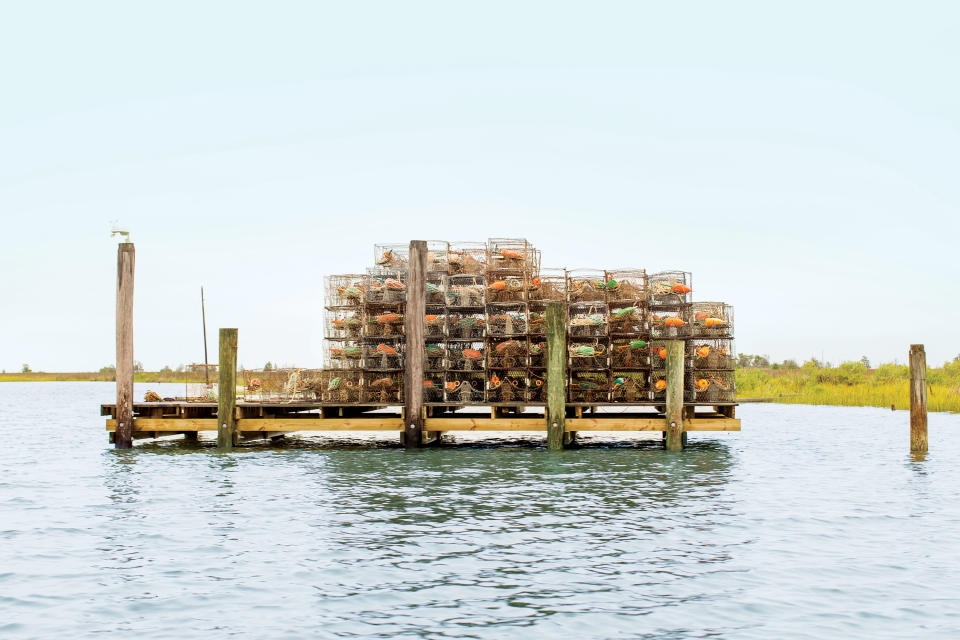
The total travel time is three hours. The distance is more like three centuries—back to a time when the water was the source of all life. It's a lesson we learn soon after arriving, when, on the street adjacent to the watermen's docks, we meet Rick Edmund. The minister of the Smith Island United Methodist churches, Edmund considers himself an ambassador for an island that needs no actual governance, such is the sense of family among the descendants of the original dozen or so clans. (Today's population simmers at around 200 souls.)
RELATED: 5 Secret Islands of the Chesapeake
Edmund has just come from visiting with a woman who has picked an astounding 19 pounds of crab in a single day—the men harvest; the women pick—when another parishioner approaches. Trying to flip tears away from her eyes, but failing, she tells Edmund that her husband has finally sold his boat. The loss stings, like a family member gone.
Her husband and father-in-law have bought another one together, but change comes hard on Smith Island, a place where you'll find not a single fancy home, because dollars always go to the maintenance of the boats. Edmund takes time to console her, to move her to a smile. "When someone's in trouble," he observes of the Smith Island community, "everyone's in trouble."
There's no crime on Smith Island, even though there is no law enforcement—which is not to imply that the occasional mainland sheriff hasn't been spotted at Harborside, a grocer with a deli tucked inside. You can't blame the badges for crossing the bay for lunch; Harborside's softball-size crab cake, its meat harvested the day before, is served on a paper plate with a hamburger roll, a slice of tomato, and some iceberg lettuce, accompanied by a few potato chips. It simply has no equal on Earth. (Except, perhaps, at Drum Point Market, also renowned for its crab cakes. Apparently Smith Island is the center of this universe.)
The simple presentation reflects the island's priorities. It's not tourist dollars that keep this community's heart beating. It's the harvesting and packaging and shipping of the crabs and the oysters that keep Smith Island alive. The harvesting is hard work. When I ask Chad Bradshaw (of the original 17th-century Bradshaws) how many men on the island are watermen, he answers, "Every man who can, does. But you need your health."
"You don't got to be smart," adds his friend John Tyler (of, yes, the original 17th-century Tylers). "But you better be healthy."
Related: The Cheapest Places to Travel Each Month of the Year:
"Here, there are much more traditional roles," explains our amiable hostess, Michele Davidson, proprietress of the Smith Island Inn. "My mom compares it to the 1940s—you can just let your kids out, knowing they won't get in trouble because someone will be looking out for them."
The children, though, are leaving. The Eastern Correctional Institution on the peninsula provides jobs. The Internet provides glimpses of another world. The island needs lifeblood. Of late, it's not forthcoming. The starkest symbol of Smith Island's uncertain future is the first building off the ferry—Ruke's Seafood Deck—sagging, empty, closed in 2015 after a century of serving the island.
"People have faith in one another, and themselves, that things are going to be all right," Davidson says, dropping us at the next morning's ferry in her golf cart. As the ferry pulls away, I notice that the footings of a waterside building are underwater. The island is disappearing. We hope that its way of life does not follow.
RELATED: The Best Crab Shacks on the Chesapeake
Technically, Virginia's piece of the shore is separated from Maryland's by nothing but a line on a map. The truth is different: As soon as you enter the new state from the north, something intangible changes. The pace gets even slower, even lazier. The scent is of the South.
Virginia's tail of the horseshoe crab–shaped shore is about as wide as a blink: You're never more than a stone's throw from water on either side. It makes the peninsula feel like one big workspace for harvest. And the heartbeat of the Virginia Eastern Shore is the town where flat-bottom boats once transported the Queen's goods across the bay, then returned with tobacco en route for England.
The Native Americans called it Auwannaku, "foggy place." Today it's known as Onancock: a quiet town that prides itself on its arts scene, and its determination to not let change come swiftly or at the expense of authenticity.
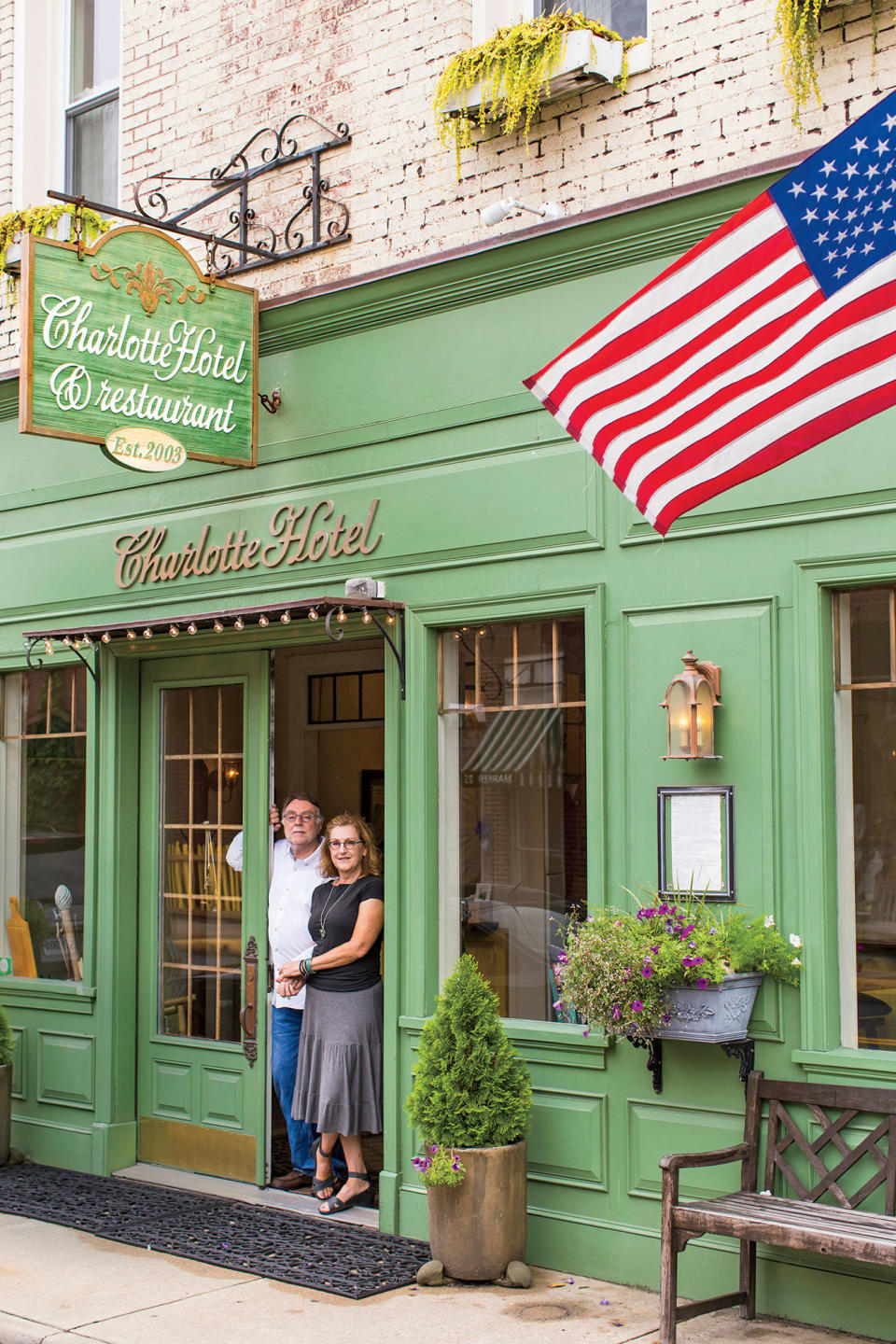
"Onancock is not going to be gentrified," says Gary Cochran—co-proprietor, with wife Charlotte Heath, of the Charlotte Hotel and Restaurant at the center of the small downtown. "This is still a working town, with a community of artists. The mood I sense right now is reinventing and reinvigorating."
That's a good description of the couple's journey. After completing a farmhouse renovation in their native Pennsylvania in 2002, Cochran and Heath were in need of another project. They discovered it in a hotel built in 1907, shuttered and desperate for a reboot. "We found our bliss," Cochran says. "It's the solitude. The peace. You can choose to be disconnected. You can choose to be 25 years behind the times."
Kris LaMontagne, a longtime local we meet at "Wine Down" hour at The Inn at Onancock, agrees with Cochran. There's no desire to make things too precious, and there's an emphasis on community, he says. "People move in and keep the houses just the way they are. There's not only a definite sense of history, but of the energy of the water."
This captures it, suddenly: the energy of the water. It can reinvigorate a town. It can keep an island alive. It can preserve the heartbeat of a region. It can draw the rest of us from near and far to a place that is not defined only by its geographical boundaries, but by its aura.
And just like that, we glimpse the true soul of the Chesapeake. It's the very thing that it is, the bay, the water. It's a res ipsa loquitor of a moment: the thing itself. This place, the Eastern Shore, gives us an enviable set of lenses through which to view that soul. From the table, from the dock, from the stern of a slow-moving ferry. We peer into the water that feeds us on every level, and find ourselves replete.
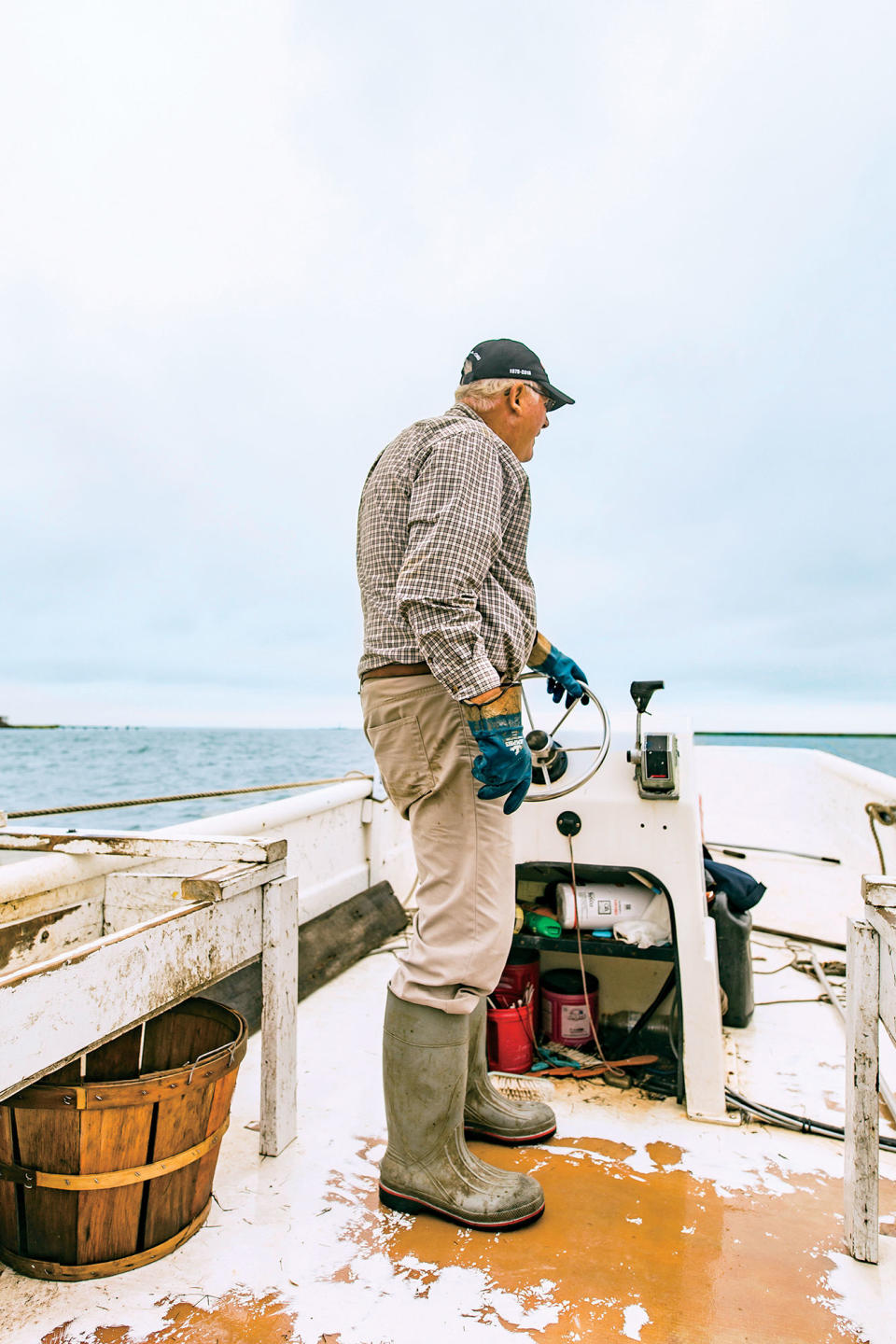
Smith Island waterman Barry Bruce
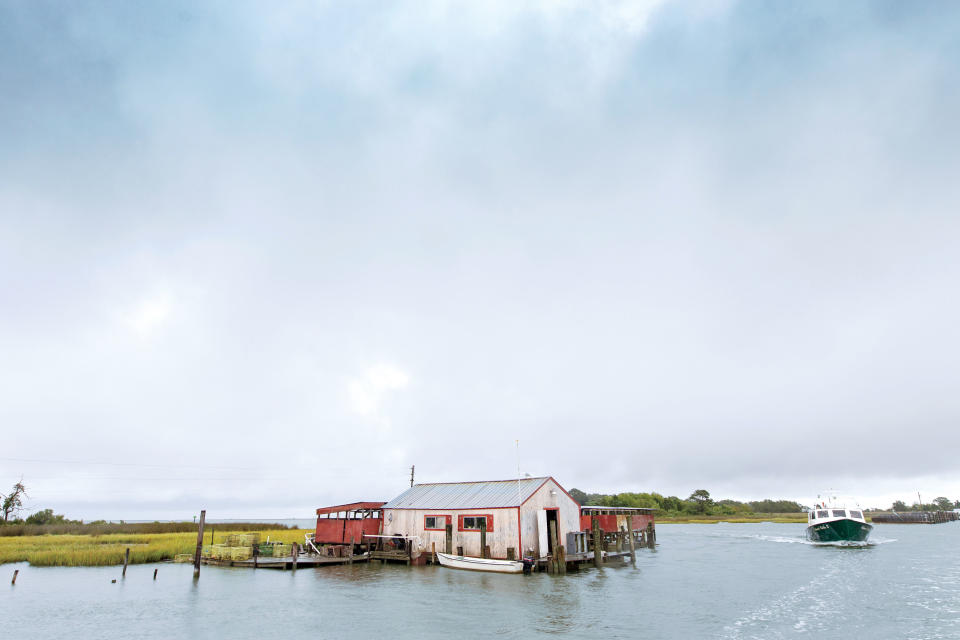
The long and rich legacy of making a living from the waters of the Chesapeake Bay continues to define the rhythms of the Eastern Shore—perhaps most poignantly on Smith Island
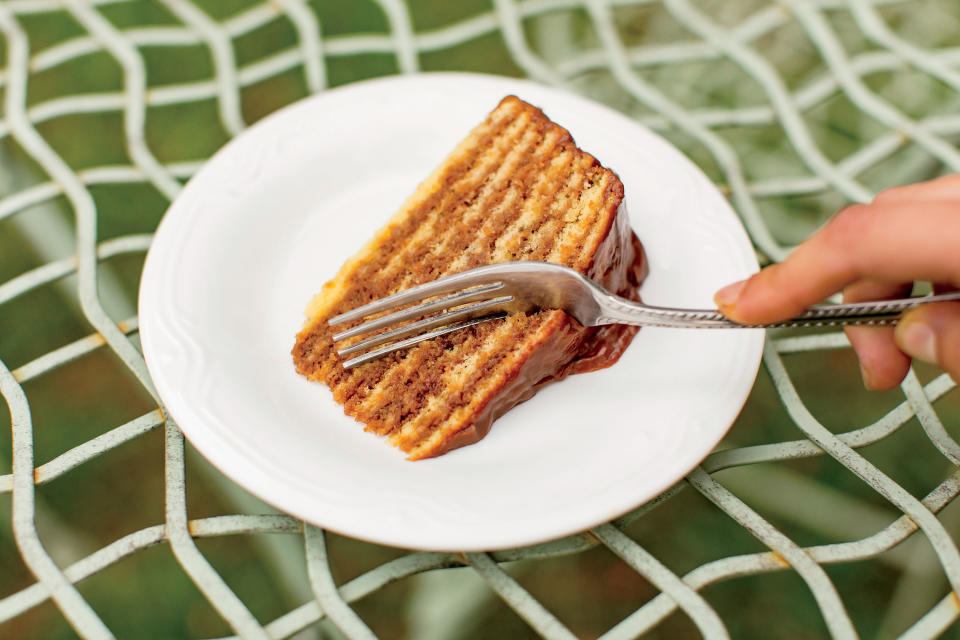
Smith Island Cake
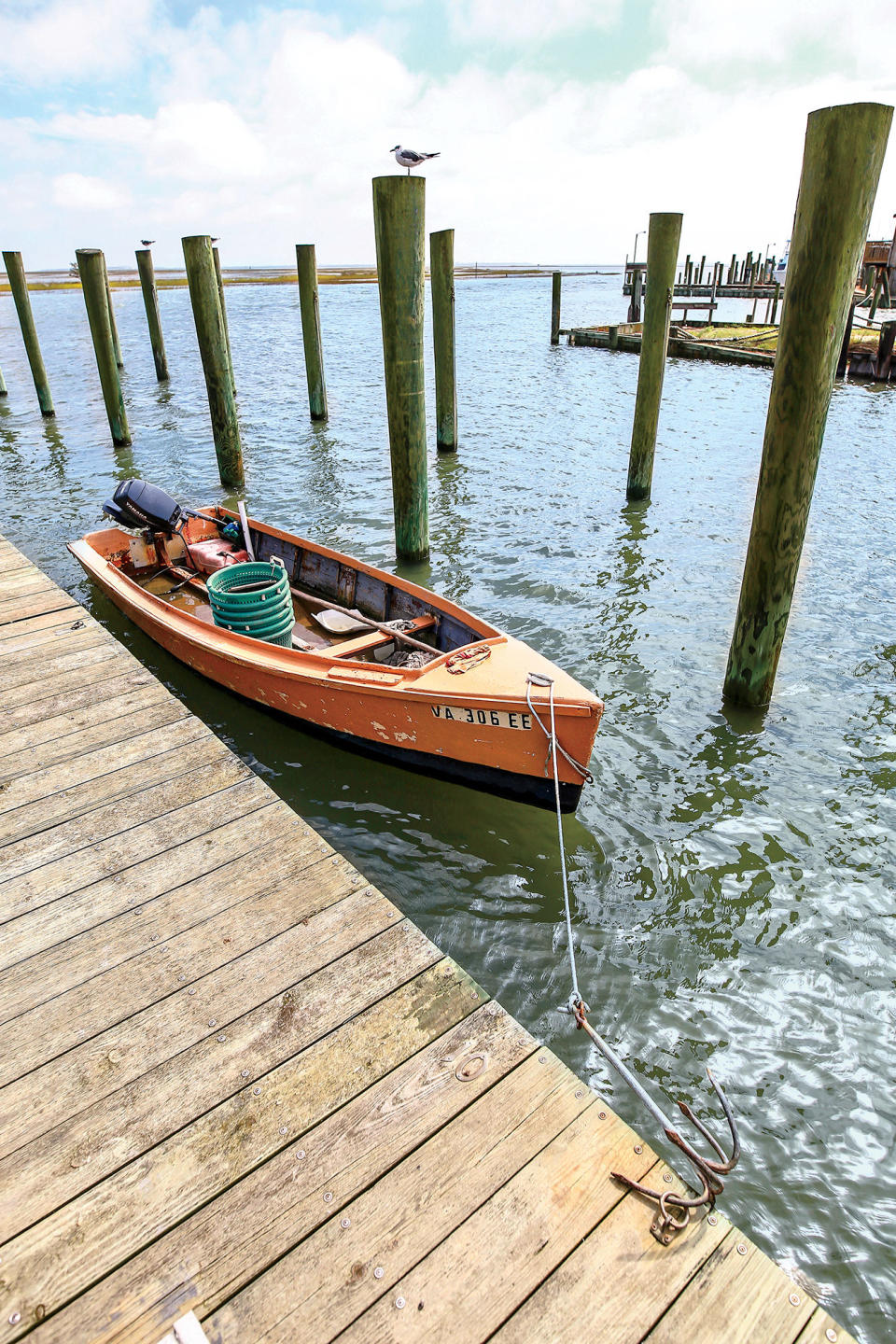
A docked boat on the Chesapeake
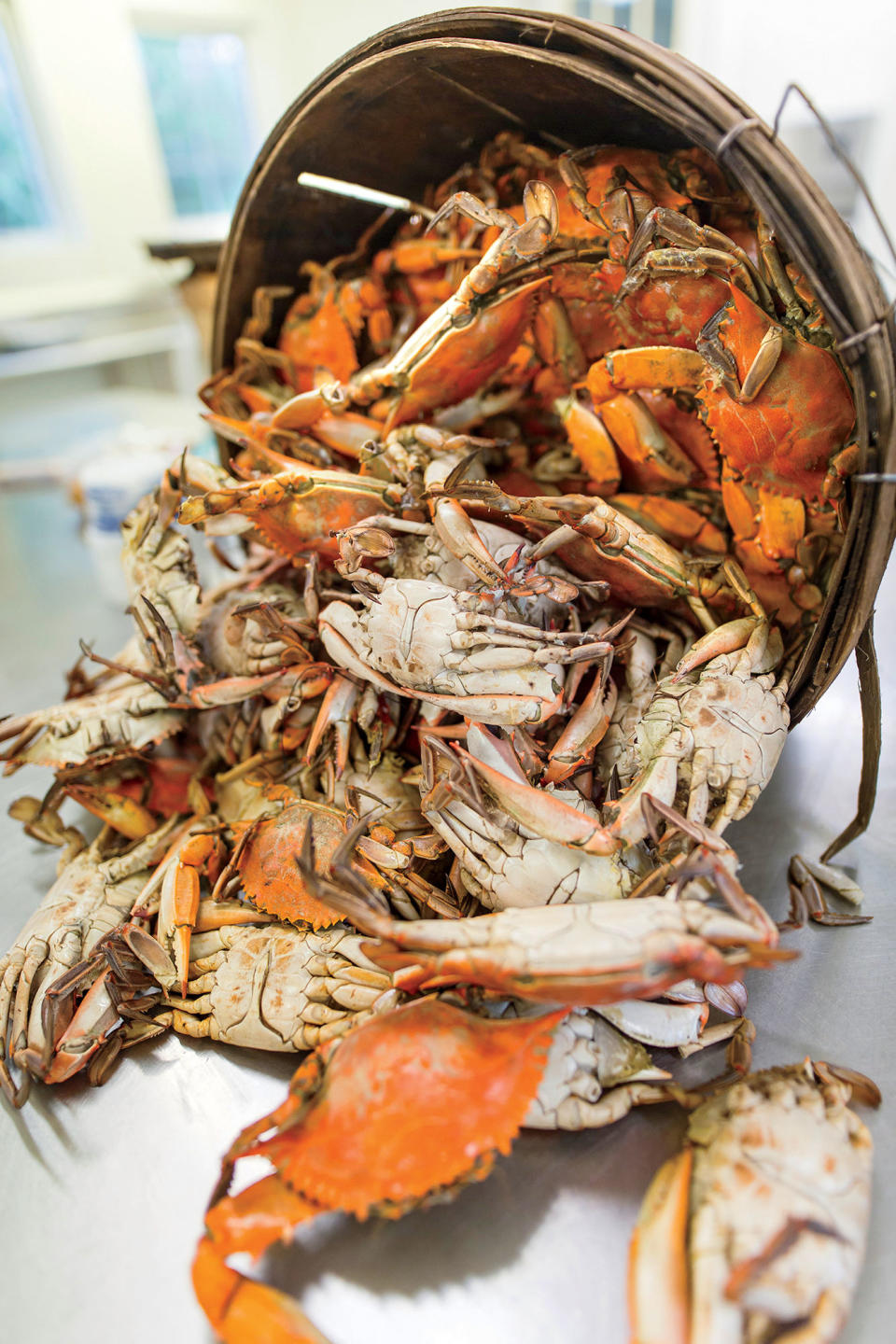
Steamed blue crabs
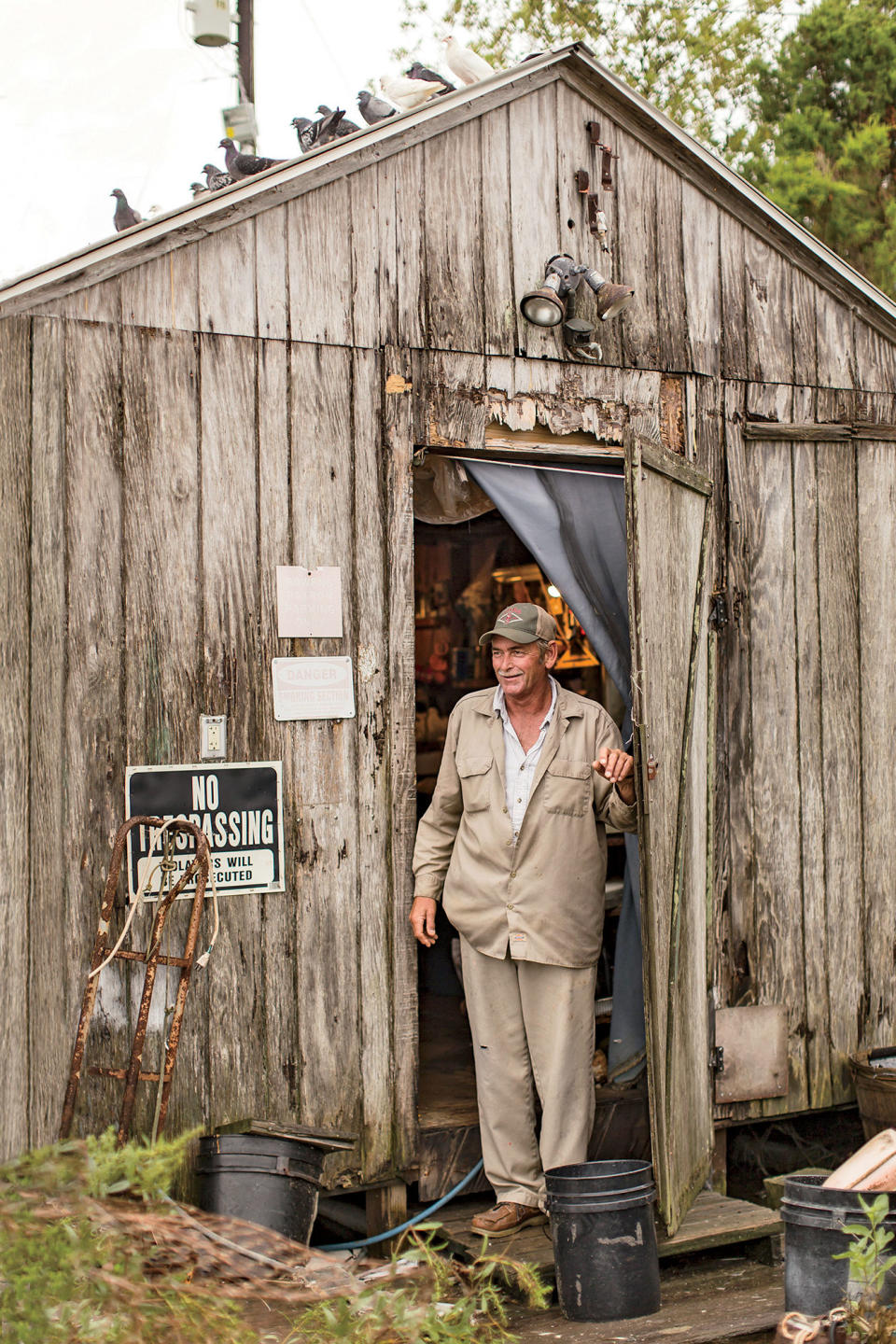
Chesapeake Bay waterman


